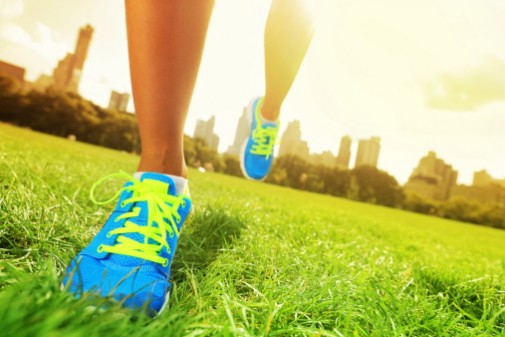Which running shoes are best for you?

The most popular brand or the pair worn by a famous athlete may seem like a good choice when purchasing a new pair of shoes, but there is much more to consider when choosing a new pair of running shoes.
Dr. John Grady, podiatrist at Advocate Christ Medical Center in Oak Lawn, Ill., says two functions of the foot should be considered when buying running shoes.
One is the foot as a “mobile adaptor,” which means absorbing shock as the foot hits the ground. The other function is a “rigid lever” when pushing off.
Your foot structure makes a difference.
For flexible or flat feet: Very supportive shoes are necessary to help one push off.
“Feet that are flexible or flat are good adaptors when you strike the service and absorb the shock well, but they are poor levers, which makes it hard for them to push off,” says Dr. Grady. “For individuals with these types of feet, muscle breakdown and shin splints occur because they struggle becoming a lever. Supportive shoes can help them.”
For rigid feet or those with high arches: Lots of shock absorption is necessary.
“These feet are good levers but poor adaptors, so these individuals are more prone to stress fractures or problems when their feet hit the surface, such as sprained ankles or dislocated joints,” says Dr. Grady. “Shoes that are very shock absorptive might help them.”
Most people’s feet are both good levers and adaptors. In this case, shoes with a little bit of shock absorption and a little bit of support are a good choice.
In addition to the support and shock absorption of a shoe, Dr. Grady recommends checking out these other components:
- Fit – Shoes today are sized in different ways so there is not a lot of consistency between shoe companies.
- Curve last – The “last” of the shoe, which is the shape of the sole, can impact the stability of the shoe.
- Toe box – A curled toe box is needed for those whose toes curl and need more space.
- Heel counter – The more rigid and narrow the counter is the better the shoe will fit in the heel.
“The average shoe today will last about 300 miles,” Dr. Grady says. “It is time to get new shoes when midsole of the shoe is no longer flat or when your feet and legs start feel more fatigue after a period of time. Pain or changes in running could be signs that you need new shoes. Wearing worn out shoes can lead to muscle breakdown, stress fractures, injuries and tendonitis.”
Related Posts
Comments
3 Comments
About the Author
health enews staff is a group of experienced writers from our Advocate Health Care and Aurora Health Care sites, which also includes freelance or intern writers.


















If you’ve been asking here is the answer!
Could Dr. Grady also discuss walking shoes? Many of us don’t run but do walk.
Jacqueline: I have plantar fasciitis, and I was recommended to buy running shoes, even though I never run (I only walk). The support in a running shoe was more beneficial for me, given my issue. Maybe that would be the case for you as well.